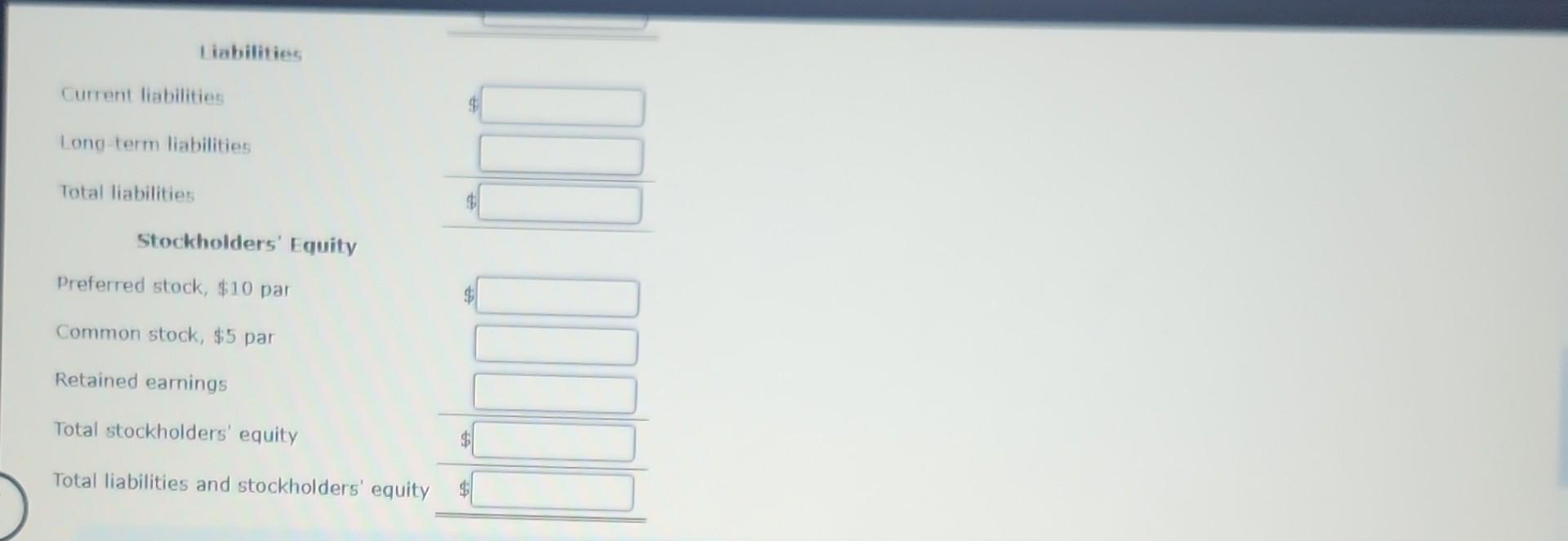Answered step by step
Verified Expert Solution
Question
1 Approved Answer
Liquidity and Solvency Measures Your friend, another accountant, has bet you that with your knowledge of accounting and just the computations for common analytical measures,






Liquidity and Solvency Measures Your friend, another accountant, has bet you that with your knowledge of accounting and just the computations for common analytical measures, you can figure out many aspects of a company's financial statements. You take the bet! Match each computation to one of the liquidity and solvency measures in the table. (Hint: Begin by looking for simple computations and identifying the amounts in those computations. Look for other measures that use those amounts.) Gross profit Selling expenses $$$(1,453,200)$3,823,000 Administrative expenses Total operating expenses Operating income Other expense (interest) Income before income tax expense Income tax expense Net income Use the following balance sheet form to enter amounts you identify from the computations on the Liquidity and Solvency Measures part. You will identify other amounts for the balance sheet on the Profitability Measures part. If you have a choice of two amounts, assume the first amount in the ratio is for the end of the year. Compute any missing amounts. Liabilities Current liabilities Long-term liabilities Total liabilities Stockholders' Equity Preferred stock, $10 par Common stock, $5 par Retained earnings Total stockholders' equity Total liabilities and stockholders' equity Profitability Measures Match each computation to one of the profitability measures in the table. Comparative Income Statement Use the following comparative income statement form to enter amounts you identify from the computations on the Liquidity and Solvency Measures part and on the Profitability Measures part. Compute any missing amounts and complete the horizontal analysis columns. Enter percentages as decimal up. For example, for 32.048% enter 32.0%. For 32.058% enter 32.1%. Liquidity and Solvency Measures Your friend, another accountant, has bet you that with your knowledge of accounting and just the computations for common analytical measures, you can figure out many aspects of a company's financial statements. You take the bet! Match each computation to one of the liquidity and solvency measures in the table. (Hint: Begin by looking for simple computations and identifying the amounts in those computations. Look for other measures that use those amounts.) Gross profit Selling expenses $$$(1,453,200)$3,823,000 Administrative expenses Total operating expenses Operating income Other expense (interest) Income before income tax expense Income tax expense Net income Use the following balance sheet form to enter amounts you identify from the computations on the Liquidity and Solvency Measures part. You will identify other amounts for the balance sheet on the Profitability Measures part. If you have a choice of two amounts, assume the first amount in the ratio is for the end of the year. Compute any missing amounts. Liabilities Current liabilities Long-term liabilities Total liabilities Stockholders' Equity Preferred stock, $10 par Common stock, $5 par Retained earnings Total stockholders' equity Total liabilities and stockholders' equity Profitability Measures Match each computation to one of the profitability measures in the table. Comparative Income Statement Use the following comparative income statement form to enter amounts you identify from the computations on the Liquidity and Solvency Measures part and on the Profitability Measures part. Compute any missing amounts and complete the horizontal analysis columns. Enter percentages as decimal up. For example, for 32.048% enter 32.0%. For 32.058% enter 32.1%
Step by Step Solution
There are 3 Steps involved in it
Step: 1

Get Instant Access to Expert-Tailored Solutions
See step-by-step solutions with expert insights and AI powered tools for academic success
Step: 2

Step: 3

Ace Your Homework with AI
Get the answers you need in no time with our AI-driven, step-by-step assistance
Get Started


